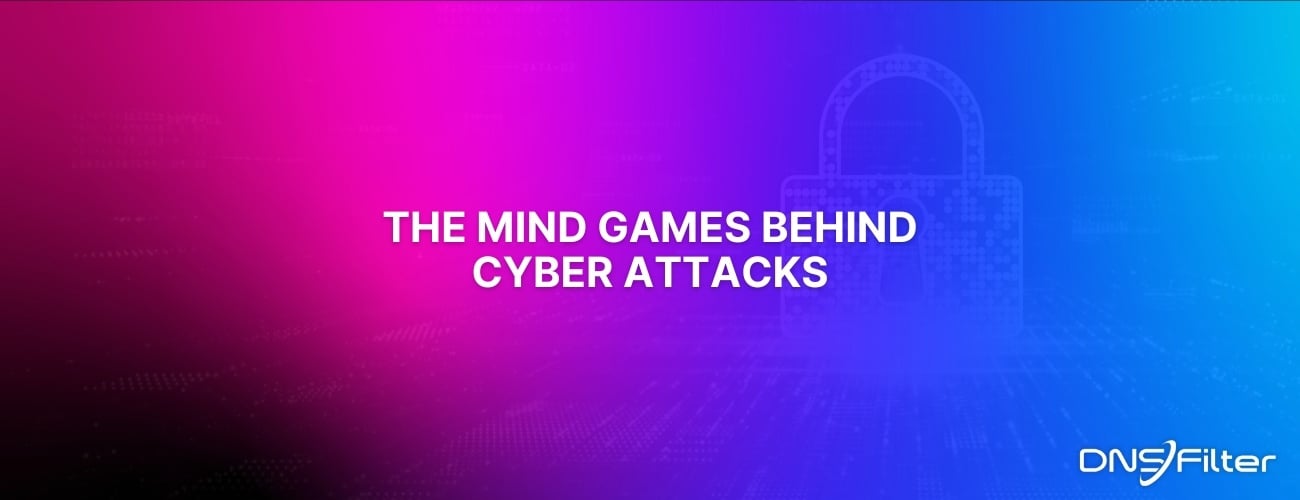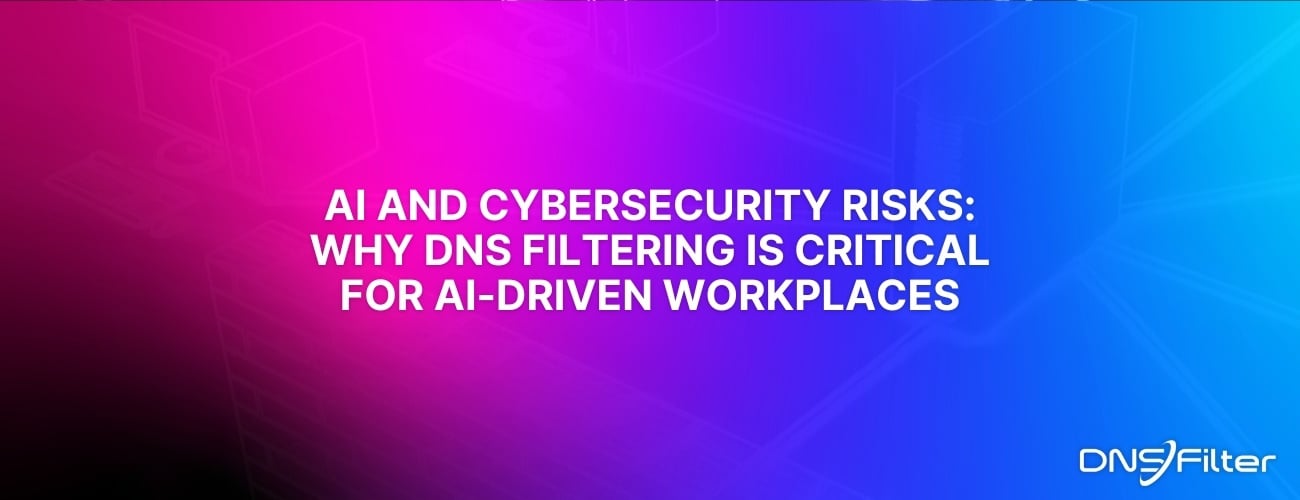Share this
How to Build Remote Culture That Works
by Kory Underdown on Aug 9, 2022 12:00:00 AM
Remote work isn’t the wave of the future, it’s the here and now. More organizations than ever are moving their workforces to hybrid or fully remote models because benefits can be staggering for both employees and companies.
With more remote roles becoming available every day, organizations looking for the best talent need to up their game in order to attract it. Does this sound intimidating? Don’t worry, we’re here to help.
DNSFilter recently hosted a panel of remote work experts with decades of experience between them to bring you this cheat sheet for creating a remote culture that sticks.
Adapting to a virtual landscape
The COVID-19 pandemic changed everything about the way we live and work. Fully remote companies were already common, but the pandemic gave an ultimatum to many organizations that hadn’t made the change yet: adapt to survive.
So how do we keep a remote culture that isn’t just sustainable, but is thriving?
Here are some must haves:
Clear remote work policies. Without strong policies surrounding remote jobs, informing how they’re going to operate and the employee experience within those jobs, everything crumbles. Remote companies must have a solid framework that is followed by leadership and employees alike, so that everyone, regardless of location or time zone, is on the same page.
“Create a space where asynchronous work comes first and foremost.” - Rhiannon Payne, Author, The Remote Work Era
Trusting leadership. Who knows the employee experience the best? Spoiler alert: the employees. Leadership must listen to what works and doesn’t work best for their workforces, and trust them to know their own criteria for operating effectively. With the proper policies in place, employees should feel trusted and empowered to accomplish their goals.
Remote-first hiring. Organizations looking to jump to remote work or partially remote work must have personnel dedicated to the process. Hire people to implement remote processes or transition to a remote workplace, don’t just lump it on someone already at capacity. Remote processes need clear communications and planning. This is not a transition that can be made in an afternoon! It takes time and resources. Find people for your organization that know how to:
- Create and implement remote processes
- Develop a plan centered around the employee experience in remote roles
- Help fully remote or hybrid companies unlearn things learned in office environments
- Know how to balance written and video communications
4 Ways to Prioritize the Employee Experience
Employees are the core of a successful work culture, no matter the environment. Prioritizing their happiness and comfort is crucial for creating a great employee experience.
- Where does the employee experience begin? Hiring. A prospective employee should know what they’re getting into when working for a remote company. The job description and the interview process tell that story.
“Be clear in job descriptions about what a remote job means at your company. Define your expectations upfront.” - Ali Greene
- Establish a “remote first” culture. For hybrid organizations, some people thrive in in-person spaces, some thrive in remote environments. If you do have an office and it’s optional, prioritize the employee’s choice.
- Avoid an unconscious proximity bias, or favoritism towards certain employees just because they work in the office.
“As human beings, we like to have choice in all aspects of our lives.” - Jessica Donahue, HR & People Ops, Adjunct Leadership Consulting
- Provide benefits to ensure comfortability while working remotely:
- Health insurance/benefits
- Home office stipend to set up ergonomic workspaces
- PTO and breaks tailored for remote lifestyles
- Mental health resources
Beyond the standard benefits packages, here are some unique benefits that can encourage socialization, and collaboration.
- Stipends for “coffee times”, group lunches, etc.
- Virtual events not tethered to work
- Gym memberships or workout classes
- Personal improvement courses, to help grow employees’ careers and skill sets for their benefit
The bottom line here is simple. Think outside the box. Find unique ways to make employees happy in a variety of different environments. Walk the walk when thinking about the employee experience and prioritize their needs.
Other Ways to Create a Strong Foundation
There are a ton of factors that go into whether a company can succeed in a remote environment or not. Some things that work for one organization might not work for another. Here are some other concepts you should consider when determining what works best for you:
Default to written communication
“Could this have been an email?” is a question all too common in today’s memes, but it’s an important one to ask. Is a video call or meeting necessary, or could it have been an email? Also, maintain genuine, authentic and transparent communications. Respect your workforce by being honest.
Avoid micromanaging, activity trackers, and “The Green Dot Fallacy”
These go back to trust. Are you trusting employees to get the work they’re assigned finished? A green dot that indicates online activity (Slack, discord, etc.) isn’t a 1 to 1 ratio for productivity. Studies show overwhelmingly that intense micromanaging is bad for your employees and bad for your company.
Allow leniency as your team adapts to the new normal
While it’s becoming more and more common, many people still have little or no experience in a remote work environment which comes with a whole array of new challenges. Show leniency in your employees’ experiences adapting to a new work/life integration.
Reimagine the standard workday
In a remote setting, don’t try to recreate the “9 to 5” workday. The reality is that your workforce could be located all over the world, and that just doesn’t operate the same as working in the same office.
Remote work is here to stay
And if you want to survive in a competitive hiring market, you have to adapt quickly. Making the move to remote work can seem intimidating for small and large teams alike, but luckily there are plenty of companies out there who have made the shift—and left blueprints for others to follow.
Remember: transition will look different for every company, so focus on what works for your business, and don’t forget to prioritize employee experience along the way.
“Unlearn the things you’ve learned from working in an office, start from scratch and rebuild your remote work muscle.” - Ali Greene, Co-author / Co-founder, Remote Works
Share this
 Artificial Intelligence in Cybersecurity
Artificial Intelligence in Cybersecurity
The term “artificial intelligence (AI)” was first coined in 1956. While progress stalled for many years, we can thank IBM for sparking real interest in AI as viable technology: First in 1997 when the computer Deep Blue defeated a chess champion and again in 2011 when Watson won Jeopardy!
 The Mind Games Behind Cyber Attacks
The Mind Games Behind Cyber Attacks
Hackers have long understood that the most sophisticated firewall is no match for a well-placed psychological trick. While many focus on the technical prowess of cybercriminals, the real magic often lies in their ability to manipulate human behavior. By exploiting our natural tendencies and cognitive biases, hackers can slip past even the most robust security systems. It's not just about cracking codes; it's about cracking the human psyche.
 AI and Cybersecurity Risks: Why DNS Filtering is Critical for AI-Driven Workplaces
AI and Cybersecurity Risks: Why DNS Filtering is Critical for AI-Driven Workplaces
Artificial intelligence is transforming business operations, automating everything from customer service to data analysis. But with these advancements come new security challenges. AI-driven cyber threats are becoming more sophisticated, enabling attackers to automate phishing campaigns, generate malware, and exfiltrate sensitive data at scale. Without proper safeguards, AI tools can unintentionally leak corporate secrets or connect to malicious ...


